Stranded North Korean workers and merchants who rely on cross-border trade see scant signs that the frontier with China will reopen soon, despite recent trips abroad by leader Kim Jong-Un and the country’s athletes.
The bustling northeastern Chinese city of Dandong has long offered a rare window into isolated North Korea and its trade with Beijing, its largest economic partner and benefactor.
But commerce ground to a halt in January 2020 when North Korea slammed its borders shut to insulate it from COVID-19 — marooning thousands of its citizens overseas.
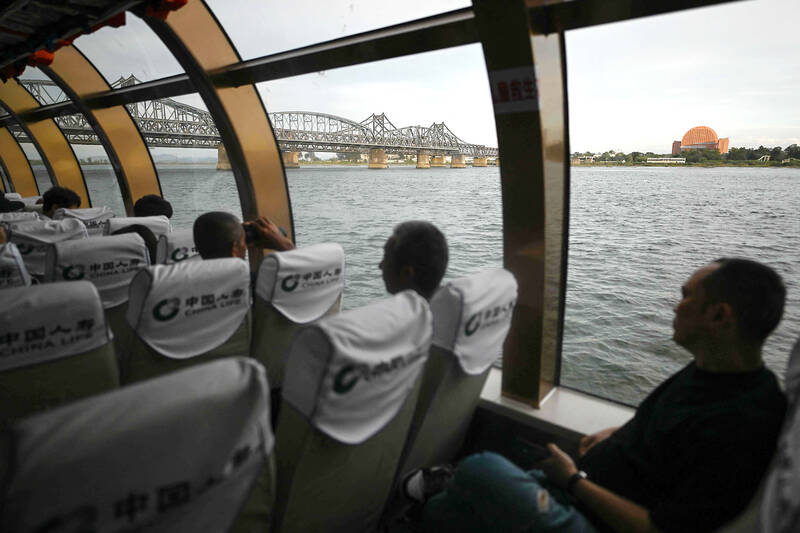
Photo: AFP
Three years on, many have still not returned home.
In Dandong in September, diners at North Korean restaurants tucked into fresh seafood and nodded along to schmaltzy song-and-dance performances.
The entertainers — young women sent to work as waitresses before the pandemic — said they missed home but had not been told when they could return.
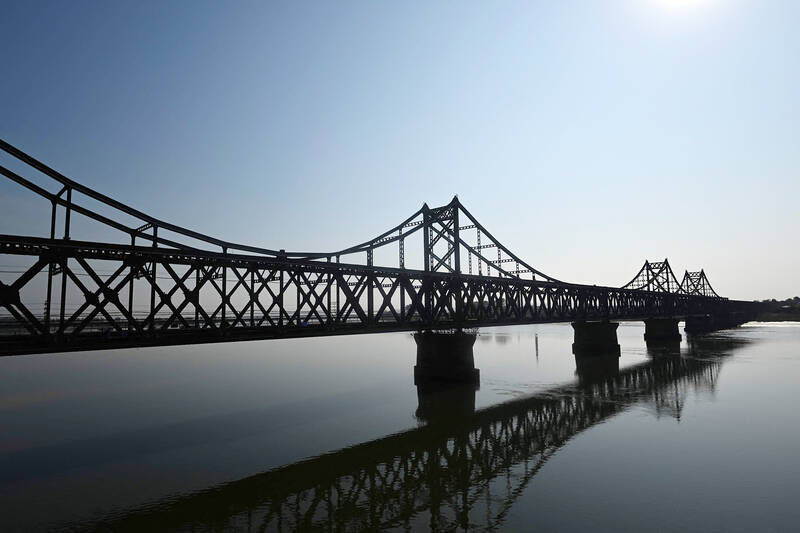
Photo: AFP
“Do you happen to know?” smiled a waitress at an eatery specializing in North Korean craft ale.
Two servers said they had come on “internships.”
UN sanctions prohibit North Korean laborers from working overseas on the grounds that they generate funds for Pyongyang’s nuclear weapons program.
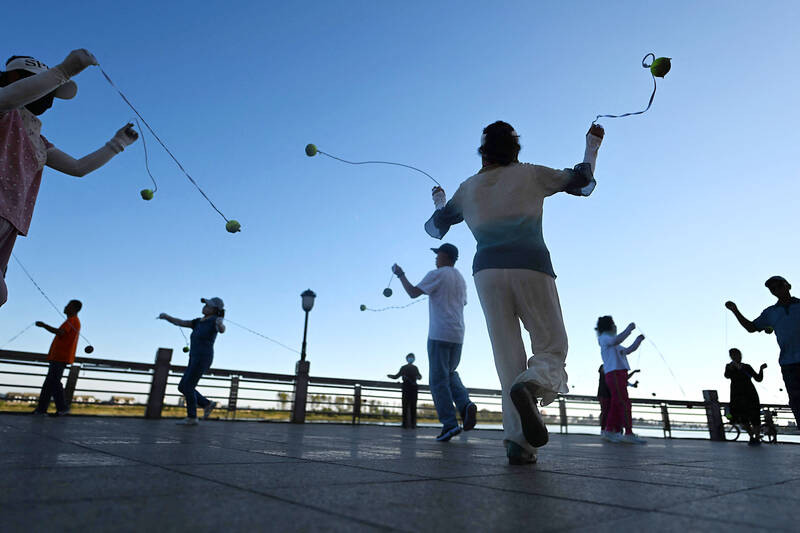
Photo: AFP
But journalists have identified at least 10 restaurants and hotels in three Chinese cities staffed by North Koreans since the start of the year.
Western experts say such workers have virtually no control over their postings, endure miserable living and labor conditions, and have much of their wages confiscated by the North Korean state.
The diners in Dandong were forbidden from filming or photographing the performances.
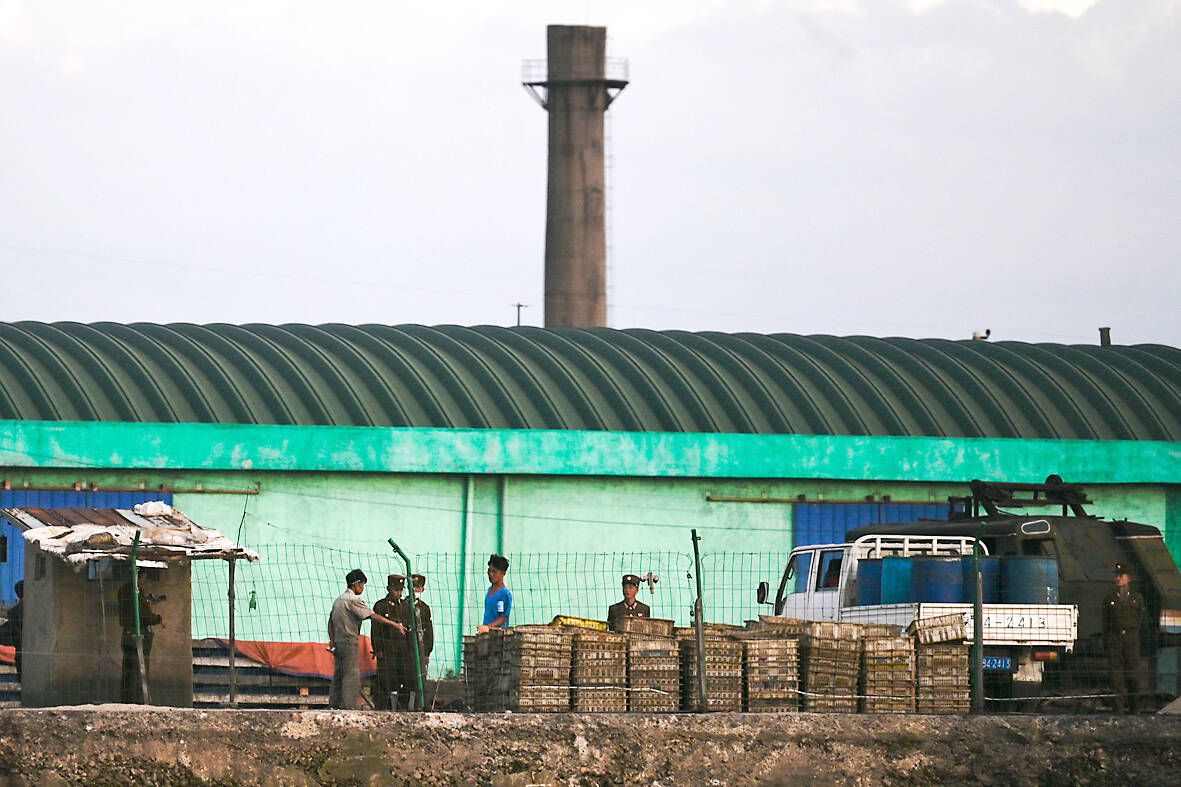
Photo: AFP
Restaurant patrons included at least eight North Korean men, some with red badges bearing their leaders’ portraits pinned to their chests.
One replied in fluent English that he lived in Dandong, but shrugged and walked out when asked about the border reopening.
‘STUCK WAITING’
North Korean athletes are now attending overseas competitions and leader Kim made a rare foreign trip to Russia last month.
But traders in Dandong said they have not seen that openness translate on the ground.
“We have no idea when they’re going to open up,” a Chinese cross-border trader said in a darkened office near the river separating the two countries.
“We’re stuck waiting, with nothing to do except sit around and drink,” another merchant said.
Nearby, dozens of import-export shops stood shuttered or derelict.
Beijing confirmed last year that rail freight with North Korea had resumed.
Reporters in Dandong this month saw a train clank into the North Korean city of Sinuiju at around 7:40am, returning about 45 minutes later.
China’s volume of trade with North Korea has ticked up recently but remains about 30 percent lower than the month before the border closure, according to calculations based on figures from Beijing’s General Administration of Customs.
But traders said restrictions on the movement of people and goods continued to hammer commerce.
“I haven’t done any business from this in over three years,” said an exporter specializing in household electronics.
He said he had pivoted to making clothing for domestic customers after trade and communications with North Korean clients dried up.
His income had fallen by around half compared to before the pandemic.
Traders declined to be identified in order to freely discuss the politically sensitive topic of dealing with North Korea.
Dandong’s customs authority declined to comment on the current state of trade.
WIGS, SEAFOOD AND GINSENG
Doing business with North Korea is fraught, with Pyongyang’s trade in everything from coal and oil to seafood and sporting equipment restricted.
Traders said it had still been possible to conduct limited commerce from China to North Korea in some medical equipment and certain types of clothing.
But the sweeping nature of the sanctions has pushed some into unorthodox ventures.
One merchant advertising wigs and fake eyelashes said he sent raw materials for processing in North Korea before reimporting finished hairpieces for sale.
Human rights groups and defectors say the hair market employs prisoners from the country’s detention centers.
Other traders hinted that certain types of under-the-table commerce were also possible.
One at a Dandong night market touted North Korean seafood, saying Chinese fishermen often raided their waters for “fresher, higher-quality” produce.
Another shopkeeper said he had “channels” for importing the ginseng lining his shelves, “but what those channels are, I won’t say.”
A brighter spot appears to be tourism — restricted to the Chinese side for now.
Several Chinese travel agents in Dandong said domestic tourists were finally rebounding after years of virus curbs crippled internal travel.
Two tour operators geared towards Western visitors said they had not received an official notice but were quietly confident about a reopening next year.
“There are positive signs,” said Simon Cockerell from travel firm Koryo Tours, stipulating that he didn’t see a reason to “get over-excited just yet.”
Before the pandemic, North Korea welcomed thousands of tourists every year.
On a boat along Dandong’s river, around 30 people gazed at Sinuiju’s rusty docks, smokestacks and near-empty roads.
A guide declared that North Korean authorities had not allowed most of the city’s residents to work near the water since the pandemic for fear of contagion.
“It’s just like China in the 1970s or ‘80s,” she told the crowd.
“Very backward.”

That US assistance was a model for Taiwan’s spectacular development success was early recognized by policymakers and analysts. In a report to the US Congress for the fiscal year 1962, former President John F. Kennedy noted Taiwan’s “rapid economic growth,” was “producing a substantial net gain in living.” Kennedy had a stake in Taiwan’s achievements and the US’ official development assistance (ODA) in general: In September 1961, his entreaty to make the 1960s a “decade of development,” and an accompanying proposal for dedicated legislation to this end, had been formalized by congressional passage of the Foreign Assistance Act. Two

Despite the intense sunshine, we were hardly breaking a sweat as we cruised along the flat, dedicated bike lane, well protected from the heat by a canopy of trees. The electric assist on the bikes likely made a difference, too. Far removed from the bustle and noise of the Taichung traffic, we admired the serene rural scenery, making our way over rivers, alongside rice paddies and through pear orchards. Our route for the day covered two bike paths that connect in Fengyuan District (豐原) and are best done together. The Hou-Feng Bike Path (后豐鐵馬道) runs southward from Houli District (后里) while the
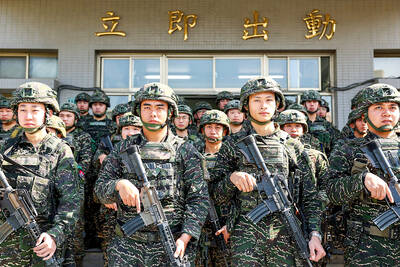
President William Lai’s (賴清德) March 13 national security speech marked a turning point. He signaled that the government was finally getting serious about a whole-of-society approach to defending the nation. The presidential office summarized his speech succinctly: “President Lai introduced 17 major strategies to respond to five major national security and united front threats Taiwan now faces: China’s threat to national sovereignty, its threats from infiltration and espionage activities targeting Taiwan’s military, its threats aimed at obscuring the national identity of the people of Taiwan, its threats from united front infiltration into Taiwanese society through cross-strait exchanges, and its threats from

March 31 to April 6 On May 13, 1950, National Taiwan University Hospital otolaryngologist Su You-peng (蘇友鵬) was summoned to the director’s office. He thought someone had complained about him practicing the violin at night, but when he entered the room, he knew something was terribly wrong. He saw several burly men who appeared to be government secret agents, and three other resident doctors: internist Hsu Chiang (許強), dermatologist Hu Pao-chen (胡寶珍) and ophthalmologist Hu Hsin-lin (胡鑫麟). They were handcuffed, herded onto two jeeps and taken to the Secrecy Bureau (保密局) for questioning. Su was still in his doctor’s robes at